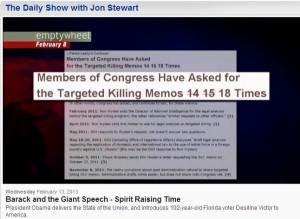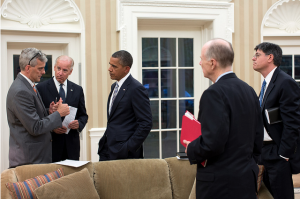Obama’s Reverse Imaginary Friend, the Assassination Robot
The Obama Administration is getting more and more like that crazy old man in the park talking to an imaginary friend. Only it works in reverse. It sends out real people to engage in hours of conversations with other real people about a real topic and then pretends both were pretend.
It sends John Brennan to the Senate for 3.5 hours where he has conversations about drones over and over with people, never once claiming not to understand what they mean when they discuss drones and/or targeted killing.
He responds to Ron Wyden’s questions about how to be more transparent on drones.
WYDEN: So it was encouraging last night when the president called and indicated that, effective immediately, he would release the documents necessary for Senators to understand the full legal analysis of the president’s authority to conduct the targeted killing of an American.
[snip]
Let me now move to the public side of oversight, making sure that the public’s right to know is respected. One part of oversight is Congressional oversight and our doing our work. The other is making sure that the American people are brought into these debates, just like James Madison said, this is what you need to preserve a republic.
And I want to start with the drone issue. In a speech last year, the president instructed you to be more open with the public about the use of drones to conduct targeted killings of Al Qaeda members.
So my question is, what should be done next to ensure that public conversation about drones, so that the American people are brought into this debate and have a full understanding of what rules the government’s going to observe when it conducts targeted killings?
BRENNAN: Well, I think this hearing is one of the things that can be done because I think this type of discourse between the executive and the legislative branch is critically important.
I believe that there need to be continued speeches that are going to be given by the executive branch to explain our counterterrorism programs. I think there is a misimpression on the part of some of American people who believe that we take strikes to punish terrorists for past transgressions. Nothing could be further from the truth.
We only take such actions as a last resort to save lives when there’s no other alternative to taking an action that’s going to mitigate that threat.
[snip]
WYDEN: One other point with respect to (inaudible) public oversight. If the executive branch makes a mistake and kills the wrong person or a group of the wrong people, how should the government acknowledge that?
BRENNAN: I believe we need to acknowledge that. Read more →


